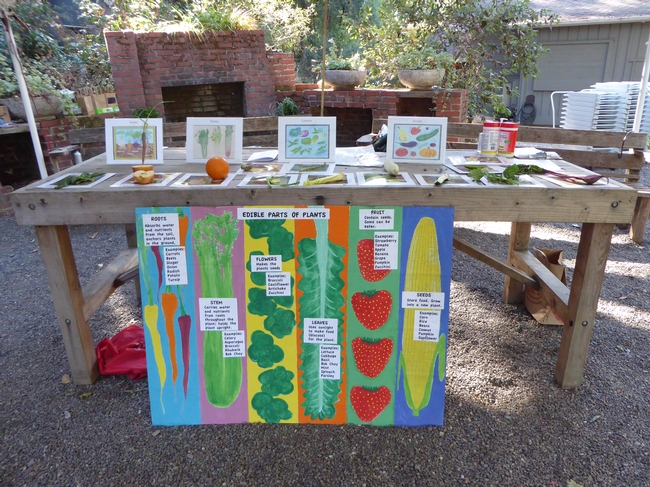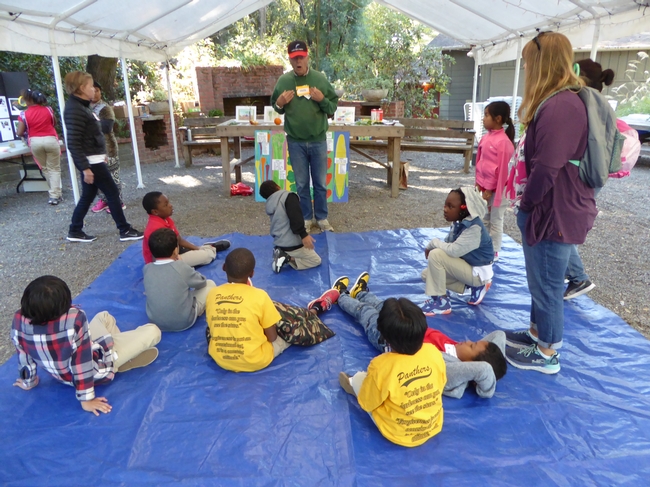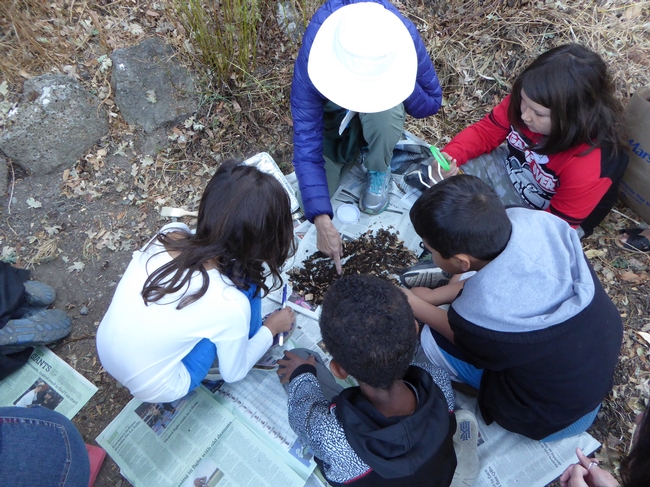Posts Tagged: Community Gardens
Dig it, Grow it, Eat it: School gardens support learning and healthier food choices
The success of a garden is normally identified by plentiful crops of tomatoes and squash or the beautiful display of vibrant thriving flowers, shrubs or trees. However, a school garden's true success is dependent on the rich experiences and education students receive.
Taking the classroom into the garden
School gardens can play a big part in supporting a child's education outside of the traditional classroom environment; offering hands-on learning experiences in a variety of core curricula. Social sciences, language arts, nutrition and math are just a few of the many subjects that can be easily integrated into the school garden curriculum.
When paired with nutrition education, school gardens can transform food attitudes and habits.
“Gardens containing fruits and vegetables can change attitudes about particular foods; there is a direct link between growing and eating more fruits and vegetables,” said Missy Gable, statewide director for the UC Master Gardener Program. “Programs statewide connect people to local community gardens, or provide school administrators and staff the information needed to get started with their own school, community or home garden.”
“Dig it, Grow it, Eat it”
The UC Master Gardener Program of Marin County hosts an award-winning school gardening program that emphasizes engaging students with the many learning opportunities in nature. The program is a portable field trip for school-age youth called “Dig it, Grow it, Eat it.”
“Dig it, Grow it, Eat it” starts with University-trained UC Master Gardener volunteers training school educators. Once trained, educators use the curriculum to teach students how to grow edible plants from seed to harvest. UC Master Gardener volunteers help deliver the curriculum and provide additional resources. Students learn how plants grow, and receive nutrition lessons to give them a better understanding of the human body's need for healthy food.
The half-day workshop rotates groups of students through six stations providing them with garden enhanced nutrition education, linking health with growing and harvesting foods they like to eat and are good for them. These include:
- Edible Plant Parts
- How Plants Grow
- Plant Seed Science
- Propagation
- Soil Science
The “Dig it, Grow it, Eat it” curriculum is centered on the theme “We love the earth because we care for it. We care for the earth because we love it.” For many children, getting their hands dirty in the garden and discovering the science of growing their own food brings a sense of joy and pride they can carry with them for years to come.
Connect with us
The UC Master Gardener Program extends to the public free UC research-based information about home horticulture and pest management. In exchange for the training and materials received from the University of California, UC Master Gardeners perform volunteer services in a myriad of venues. If you are interested in becoming a certified UC Master Gardener contact your local UC Cooperative Extension office or visit mg.ucanr.edu.
Gardening is a growing trend in tough times
A community garden in Palm Desert was featured on the local TV news last night, with gardeners and experts proclaiming the many benefits of producing one's own vegetables.Reporter Eddie Quezada of KESQ-TV interviewed gardener Brian Desborough, who said his small plot yields about 100 pounds of heirloom tomatoes, vegetables that often go for $5 a pound at supermarkets.
UC Cooperative Extension vegetable crops advisor Jose Luis Aguiar noted in his interview the psychological benefits of gardening.
"It's nothing better than coming out and spending a couple hours moving the soil, moving the vegetables around, watering, trimming them, nothing better than that and the added benefit is you get to pick your own vegetables which are always the best because they are fresh," Aguiar said.
All of the Santa Rosa Community Garden's 200 plots are being cultivated by local gardeners, and a waiting list for space there has been maintained for three years, Quezada reported.

Jose Luis Aguiar
San Diego community garden in limbo
The San Diego Union-Tribune ran an article today about the uncertain future of a popular community garden. The Santee community garden is on the grounds of the community's county-owned Edgemoor Hospital. Patients are being moved from the facility and most of the buildings are slated for demolition.
Two UC Cooperative Extension Master Gardeners are quoted in the story, 85-year-old Joyce Gemmell, and Judy Jacoby, the co-chair of the San Diego County Master Gardener Association's community gardening committee.
Gemmell, who lives in a mobile home, tends one of the community garden's 30 plots, producing corn, squash and other produce for herself and the Santee Food Bank.
"I've always been a gardener," she was quoted in the article. "I'm the old generation – growing food is important to me."
Jacoby commented on the popularity of community gardens in San Diego County. She said some gardens have stopped adding names to their wait lists because of high demand.
“There is a huge, huge interest,” she told reporter Michelle Clock.




